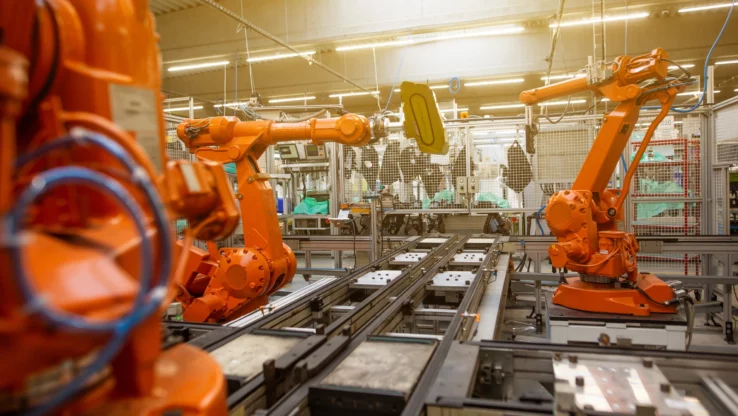China Unveils Breakthrough Atom-Thin 2D Semiconductors
20. November 2023
Semiconductors are shrinking in size while gaining power, potentially bringing the industry to the cusp of a revolution. Recently, Chinese scientists made a significant stride, showcasing a 12-inch wafer composed of 2D semiconductor material, suggesting a redefinition of technological boundaries could be imminent.
A team of Chinese scientists has successfully produced 12-inch wafers from 2D semiconductor material. This could challenge the dominance of traditional silicon chips in the long run.
Two-dimensional semiconductors are just a few atoms thick, giving them enormous flexibility and excellent semiconductor properties, but also making their production challenging. Even minor irregularities or impurities can affect the quality and functionality of the entire wafer. Conventional production methods, developed for thicker materials, are either inapplicable or inefficient. The researchers had to develop innovative production methods.
A particularly promising approach that has proven effective in practice is “surface-to-surface technology”. In this method, the growing 2D materials are directly applied to a carrier surface, promoting uniform growth of the 2D material across the entire wafer – without interruptions. This method allows for the production of high-performance and reliable wafers with minimal defects.
The Transformative Potential of 2D Semiconductors
2D semiconductors hold significant economic potential. One of their outstanding advantages is enabling the miniaturization of semiconductor components. Being just a few atoms thick allows for the creation of smaller and more powerful chips. This directly impacts production costs, as less material is needed, and devices can be made more compact.
The combination of lower production costs, compact devices, and improved performance characteristics opens new possibilities for various industries. From electronics to renewable energy, 2D semiconductors could form the basis for innovative technologies and products that were previously unattainable.
Applications of 2D Semiconductors
Nanoelectronics:
Due to their extremely thin nature, 2D semiconductors could form the basis for the next generation of microprocessors and memory devices, pushing the boundaries of Moore’s Law by enabling even smaller and more powerful chips.
Optoelectronics:
2D semiconductors could be used in sensors, detectors, and other optoelectronic devices. Their ability to efficiently convert light into electrical signals (and vice versa) could lead to improved camera sensors or more efficient solar cells.
Quantum computing:
The unique quantum properties of 2D materials make them ideal candidates for developing quantum bits or qubits, the basic building blocks of quantum computers.
Flexible electronics:
Due to their flexibility, 2D semiconductors could be used in bendable displays, wearables, and other electronic devices.
Thermoelectric applications:
2D semiconductors efficiently convert heat into electrical energy. This could make them key components in thermoelectric generators, creating usable energy from waste heat.
Sensors:
The high sensitivity of 2D semiconductors to changes in their environment could lead to the development of more precise and responsive sensors, such as in environmental monitoring or medical diagnostic devices.
Potential Challenges Ahead for 2D Technology
Critics point out that the practical applicability of 2D semiconductors in the real world still needs to be proven. To bring 2D semiconductors into mass production, significant investments in research and development are needed. Moreover, the production of 2D materials requires precise control and specialized facilities, potentially raising production costs and limiting scalability.
These materials are also often sensitive to oxygen, moisture, and other environmental influences. If not adequately protected, this can affect their performance and shorten their lifespan. In addition, the electronic properties of 2D materials may change over time, especially when exposed to high temperatures or strong radiation.
Another challenge is integrating 2D semiconductors into existing electronic systems and manufacturing processes, as they differ in many ways from traditional semiconductors. There are also concerns about the environmental impact, as sustainable production and disposal of 2D materials are not yet fully understood.
The Next Chapter in Semiconductor Technology?
The developments in China could mark a decisive moment in semiconductor technology. 2D semiconductors undoubtedly have the potential to revolutionize the electronics landscape. If the industry overcomes these challenges, a new generation of electronic products could emerge.


